How to make full use of the light on the spot when shooting beautiful women? Through actual combat analysis, this technique teaches you how to use artificial fill light reasonably in different light environments to obtain ideal lighting. How to combine the original light of the environment, reasonably adjust the position and output parameters of the flash lamp, so as to achieve the perfect fusion of artificial light and natural light.
Table of Contents
Shooting Guide 1:
camera position analysis
Novices in portrait photography are accustomed to cutting a person’s half-length or head to shoot a part of it. Such works convey very limited information. As the shooting progresses, it is necessary to exercise the ability to shoot environmental portraits, so that the lines, colors, light and shadow of the characters and the environment can be combined to obtain a richer expression. This work incorporates the lines of the environment into the picture. The industrialized complex and detailed structure and cool colors reflect the soft beauty of the model, and the red clothing creates a contrast between warm and cold and the environment.
When shooting, aim at the highlight of the model’s forehead to meter the light. After slightly reducing the exposure compensation, pull the flash out of the reflector. With the help of a small area of reflected light, it illuminated the model’s body properly, so as to retain the overall sketch relationship of the light in the picture.
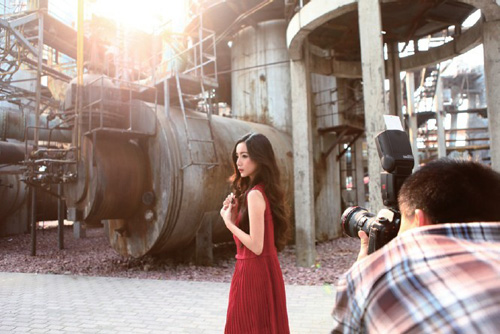
Shooting parameters: ●Aperture: F2.8 ●Shutter speed: 1/125s ●Focal length: 22mm ●Sensitivity: 100 ●Exposure compensation: EV-0.3
Shooting Guide 2:
camera position analysis
Using a wide-angle lens to shoot, the relationship between the surrounding environment and the characters has been more fully expressed. The large area of blank space on the ground creates a dense contrast with the complex industrial installations behind, allowing the audience to see a richer picture of information.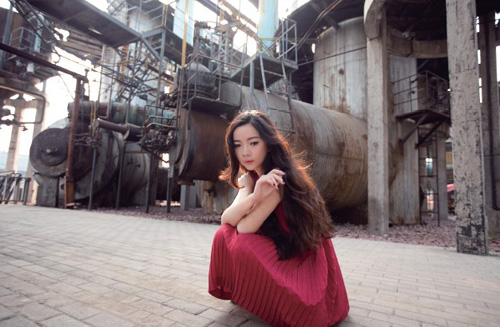
Shooting parameters: ●Aperture: F2.8 ●Shutter speed: 1/100s ●Focal length: 21mm ●Sensitivity: 100 ●Exposure compensation: EV-0.3
Shooting Guide 3:
camera position analysis
The sunlight passes through the device and is projected onto the U-shaped tube. The huge industrial device structure and cold texture echo the model’s melancholy atmosphere, giving the picture a unique mood. This is a unique effect obtained by bringing in the environment.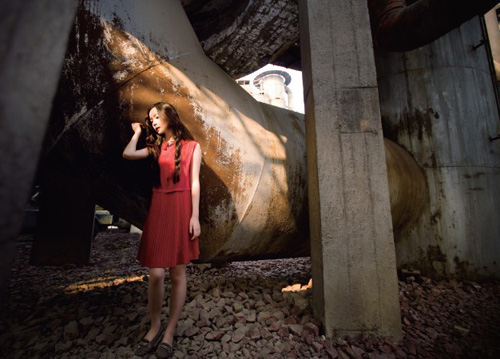
Shooting parameters: ●Aperture: F2.8 ●Shutter speed: 1/80s ●Focal length: 16mm ●Sensitivity: 100 ●Exposure compensation: EV-0.3
Shooting Guide 4:
Ask the model to reverse his body to take the shot, and a golden marginal light appears behind the model’s hair. Due to the reverse shooting, the face of the model will appear darker with the back-to-top backlight. So photgraphers activate the ETTL mode of the flash, and pull out the light-emitting board to fill in the light. Artificial fill light will generally show shadows. At this time, we must pay attention to make sure that the direction of the shadow produced by artificial supplementary light is consistent with the shadow produced by natural light to prevent the appearance of “two suns” (that is, two or more shadows in different directions).
Although photographers use the front flash to fill light in the above two pictures, there is no reflector behind the model. In addition to illuminating the body of the model, the fill light has no reflector reflection. So there is basically no visible shadow.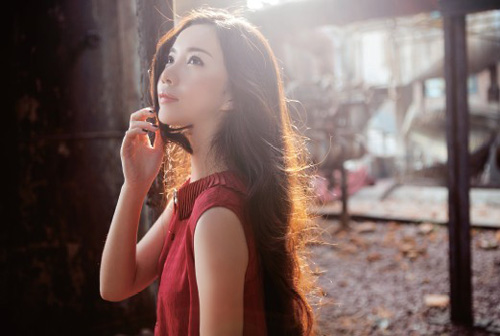
Shooting parameters: ●Aperture: F2.8 ●Shutter speed: 1/60s ●Focal length: 40mm ●Sensitivity: 100 ●Exposure compensation: EV-0.3
Shooting Guide 5: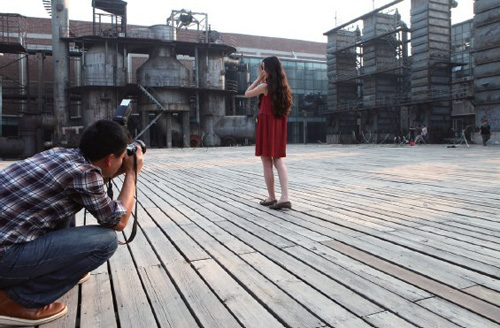
This is a large square with a tall installation tower behind it. The dense horizontal lines of the wooden boards on the ground form a “broken” relationship with the vertical lines of the distant installation. This increases the linear orientation of the picture. At the same time, the perspective of the near and distant lines of the floor strengthens the sense of depth of the scene and the sense of space.
Shooting portraits in large scenes can easily cause the separation of people and scenes. When shooting, pay attention to the model not too far from the lens. Otherwise the big environmentit will submerge it. In this work, there are two reasons for the model to obtain the main position in the picture. One is the red clothes, and the other is the light on the body.
Pay attention to the light on the scene before shooting. And you will find the light spot projected by the light on the ground, so that the model is in the spot area. Here we apply the principle of finding light again. At this time, the bright area behind the model emphasizes the main position of the model. At the same time, the backlight casts a contour light on the model’s body, echoing the light spots emitted from the towers in the background. And there is a sharp contrast of light and dark in the picture.
Photographers can deal with the characters in the dark background. But because it is in the dark, it basically won’t snatch the model’s dominant position. And it also adds a sense of plot to the picture. Therefore, it is reserved here.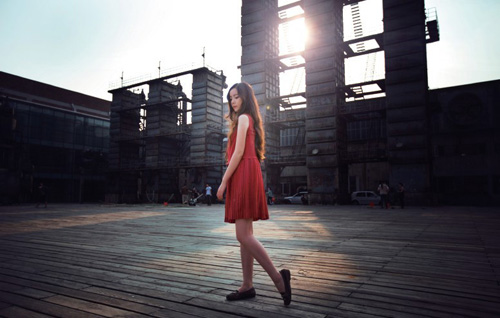
Shooting parameters: ●Aperture: F2.8 ●Shutter speed: 1/1250s ●Focal length: 25mm ●Sensitivity: 100 ●Exposure compensation: EV-0.3
